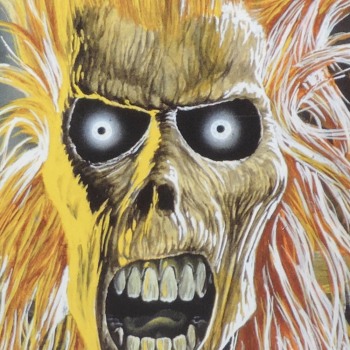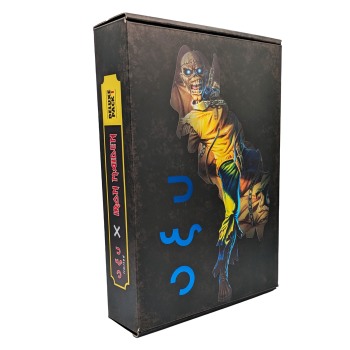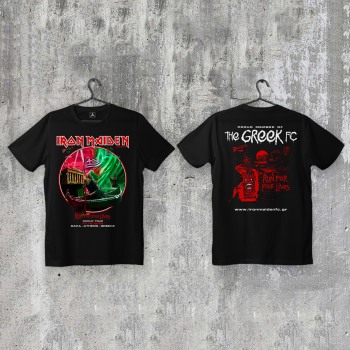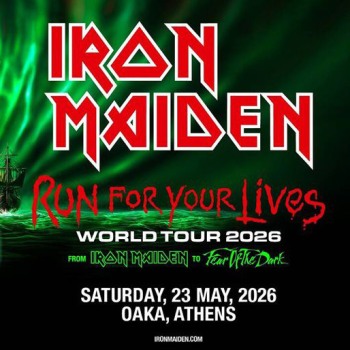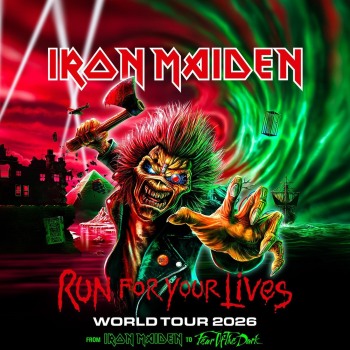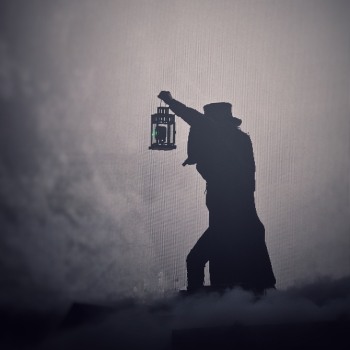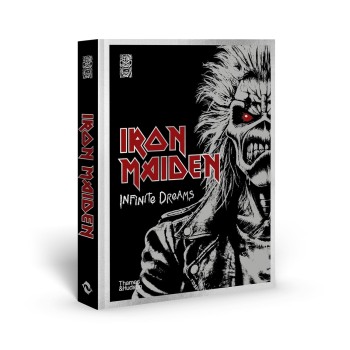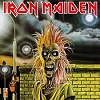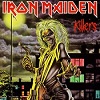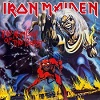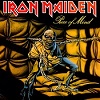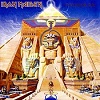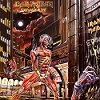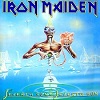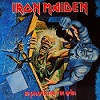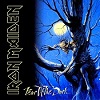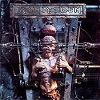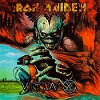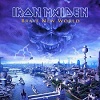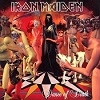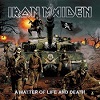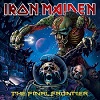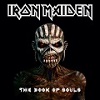From his first appearance as a paper made mask from the scene of concerts of Iron Maiden until today, Eddie (Eddie the Head) is featured everywhere! From a cyborg and an Egyptian mummy up to a lobotomized mentally ill patient, he appear in all their album covers (and in most singles) and the various products which including T-shirts, posters and action figures.
Eddie, also known as Eddie the Head, is the mascot for the British heavy metal band Iron Maiden. He is a perennial fixture of the group's artwork, appearing in all of their album covers (as well as most of their singles) and in their merchandise, which includes t-shirts, posters and action figures. On top of this, Eddie features in all of the band's concerts, as well as in the first-person shooter video game, Ed Hunter, and as an unlockable character in Tony Hawk's Pro Skater 4.
Originally a papier-mâché mask used in Iron Maiden's stage backdrop, the band transferred the name "Eddie" from the mask to an illustration by Derek Riggs, which was used as the band's debut album cover. Although he is occasionally described as "zombie-like" in the press, Eddie assumes a different guise relating to the themes of individual albums and their corresponding world tours, and has appeared as a cyborg, an Egyptian mummy and a lobotomised mental patient amongst others.
- Iron Maiden, the first artwork featuring Eddie, originally
created for a possible punk record, based on an American's head allegedly stuck
to a Vietnamese tank.
- "Running Free", the band's first release to depict Eddie, painted after the album cover so his face was hidden to protect his identity.
- "Sanctuary", showing Eddie above Margaret Thatcher's corpse, wielding a knife. According to Riggs, the band's management censored the image themselves to gain publicity.
- "Women in Uniform", according to Riggs features Margaret Thatcher getting "her own back" on Eddie.
- Killers, featuring Eddie with an axe and his victim clawing
at his shirt. Based on a block of flats in which Riggs lived at the time, it
contains several references to the band, such as the "Ruskin Arms" and "Charlotte
the Harlot".
- "Twilight Zone", features Eddie's spirit reaching towards a woman through a mirror. According to Rod Smallwood, Iron Maiden's manager, the band were criticised as Eddie appeared to be attacking the woman.
- "Purgatory", depicts the devil's face crumbling away to reveal Eddie.
- Maiden Japan, shows Eddie with a Samurai sword. The cover was painted at short notice as the original, featuring Eddie decapitating Paul Di'Anno, was withdrawn as the band were considering replacing him.
- The Number of the Beast, depicts Eddie controlling the
Devil like a puppet, who, in turn, also controls a puppet Eddie, causing controversy
with American evangelists. Originally painted for the "Purgatory" song, Smallwood
withheld the artwork for the following album, deeming it too good for a single.
- "Run to the Hills", shows Eddie fighting Satan with a Native American tomahawk, a reference to the song itself.
- "The Number of the Beast", the single cover showing Eddie holding the devil's decapitated head, which Riggs claims was meant to look like Salvador Dalí.
- Piece of Mind, a lobotomised Eddie, in a straightjacket,
is chained at the neck to a padded cell.
- "Flight of Icarus", shows a winged Eddie torching Icarus, which Riggs states was meant to look like Led Zeppelin's Swan Song logo. The painting also contains a small box, meant to be Eddie's Piece of Mind padded cell.
- "The Trooper", depicts Eddie in a red coat uniform, during the Charge of the Light Brigade.
- Powerslave, featuring a statue of Eddie as an Egyptian
Pharaoh/God.
- "2 Minutes to Midnight", showing Eddie sitting in front of an atomic explosion.
- "Aces High", depicts Eddie in a Spitfire cockpit.
- Live After Death, shows Eddie rising from the grave.
- "Run to the Hills (live)", contains live versions of "Run to the Hills" and "Phantom of the Opera" and so featured Eddie as the phantom in a hilly landscape.
- Somewhere in Time, Eddie appears as a cyborg in a Blade
Runner-inspired future. The cover is notable for containing dozens of Easter
eggs relating to the band and pop culture references.
- "Wasted Years", as the single came out before the album, the band did not want to reveal Eddie's new cyborg guise, so appears as a reflection in a time machine.
- "Stranger in a Strange Land", depicts Eddie as Clint Eastwood in a Star Wars-esque bar.
- Seventh Son of a Seventh Son, depicts a surreal Eddie with
most of his body removed, which Riggs claims was because he was "sick of painting
him" and this would mean there would not be as much of him to draw. Riggs also
comments that he set it in a "polar landscape" after seeing a documentary on
the North Pole, and that Eddie's head on fire was inspired by Arthur Brown.
- "Can I Play with Madness", shows Eddie's brain being destroyed.
- "The Evil That Men Do", according to Riggs he drew the artwork in a single night.
- "The Clairvoyant", depicts Eddie with three faces, indicating the ability to see the past, present and future.
- "Infinite Dreams"/ Maiden England, featuring Eddie riding a motorcycle.
- No Prayer for the Dying, shows Eddie bursting out of another
grave. Unlike the band's previous artworks, in which he would retain the same
features gained with each release (such as the Piece of Mind lobotomy), Eddie
returned to how he was in the first few albums.
- "Holy Smoke", depicting Eddie destroying a group of televisions broadcasting TV evangelists, who the song itself attacks.
- "Bring Your Daughter... to the Slaughter", featured several different covers, such as one in which Eddie is stood outside "The Paradise Club" (a British TV series which Bruce Dickinson featured in) with Jessica Rabbit, and one in which Eddie appears as the Grim Reaper in a graveyard.
- Fear of the Dark, the first cover not created by Derek
Riggs, features Melvyn Grant's design of Eddie as a tree monster.
- "Be Quick or Be Dead", shows Eddie attacking Robert Maxwell. According to Riggs, Eddie was drawn directly onto a photo of Maxwell.
- A Real Live One, depicts Eddie biting through an electrical
cord.
- "Fear of the Dark (live)", according to Riggs shows Eddie as Steve Harris. The artwork was also used for the Raising Hell video.
- A Real Dead One, features Eddie as a radio DJ.
- "Hallowed Be Thy Name (live)", as lead vocalist Bruce Dickinson was leaving, the artwork depicts him being killed by Eddie, who appears as the devil.
- Live at Donington, re-release depicts Eddie as a bat, originally created by Mark Wilkinson for the Monsters of Rock 1992 poster.
- The X Factor, created by Hugh Syme, shows Eddie on an operating
table with most of his insides showing. Due to the cover's graphic nature, the
band had to provide a less-violent alternative consisting of a similar Eddie
from a distance.
- "Man on the Edge" is a close-up of the model's head.
- "Lord of the Flies", also by Syme, has Eddie in an electric chair surrounded by two giant flies.
- Best of the Beast, features a selection of Riggs' past
Eddies.
- "Virus", two covers, one by Syme, and one by Riggs featuring Eddie on a printed circuit board.
- Virtual XI, Eddie reaches towards a child wearing a virtual
reality headset, created by Melvyn Grant.
- "The Angel and the Gambler", Eddie with wings standing outside a floating casino, created by Derek Riggs.
- "Futureal", also by Riggs, Eddie appears as a statue head with his brain exposed. Alternate covers for these two singles are renders of Eddie as he would appear in Ed Hunter.
- Ed Hunter, featuring the version of Eddie used in the game.
- Brave New World, this Eddie originally appeared in a cloud
of smoke coming from a burning "Wicker Man" Eddie, a piece of artwork created
by Derek Riggs, but was removed and placed into the album art, wherein his cloud
form looms over a futuristic version of London.
- "The Wicker Man", Eddie appears as a Wicker Man, created by Mark Wilkinson.
- "Out of the Silent Planet", features Eddie at a press conference, also designed by Wilkinson. An alternate cover uses the same Eddie from the Brave New World cover.
- Rock in Rio: in both the CD and the DVD, as a cloud similar to the Brave New World cover, but looming over the Rock in Rio stage where the band played instead.
- BBC Archives, created by Derek Riggs for Billboard, the artwork originally depicted Eddie destroying Capitol Records (with whom they had just signed) with the pole of a British flag, but the building was changed for the album cover to him destroying the Broadcasting House instead.
- Beast over Hammersmith, shows Eddie planting a British flag in the earth, adapted from The Beast on the Road tour programme from 1982, drawn by Derek Riggs.
- Best of the 'B' Sides, depicts Eddie mooning from behind the wheel of a truck (with the words "Up the Irons" written across his rear end), illustrated by Mark Wilkinson. Wilkinson also designed the Eddie's Archive embossed metal case.
- Edward the Great, showing Eddie on a throne in full royal regalia, was created by Tom Adams.
- Dance of Death, features Eddie as the Grim Reaper, created
by David Patchett.
- "Wildest Dreams", shot of Eddie in a top hat from the "Wildest Dreams" music video.
- "Rainmaker", cover also taken from its music video.
- Death on the Road, features Eddie as an undertaker, designed by Melvyn Grant.
- A Matter of Life and Death, shows Eddie riding a tank,
created by Tim Bradstreet.
- "The Reincarnation of Benjamin Breeg", depicts Eddie destroying the grave of Benjamin Breeg, created by Melvyn Grant.
- "Different World", cover is a still from the song's music video.
- Somewhere Back in Time, shows the cyborg Eddie (from Somewhere in Time) erupting from the Powerslave statue.
- The Final Frontier, shows Eddie as an Extraterrestrial
retrieving a key from a space ship. The artwork caused controversy as it was
vastly different from the band's past covers, leading to many fans claiming
that it was not Eddie. Melvyn Grant himself has since stated that the new monster
"is not Eddie," although the band members state that it is.
- The "El Dorado" and "The Final Frontier" radio promo covers, featuring Grant's new Eddie in a comic book sleeve, were created by Anthony Dry.
- From Fear to Eternity, created by Melvyn Grant, shows three different incarnations: the Wicker Man Eddie from the "Wicker Man" single, the tank-riding Eddie from the A Matter of Life and Death album cover and a cross between the Dance of Death, Fear of the Dark and The Final Frontier Eddies.
